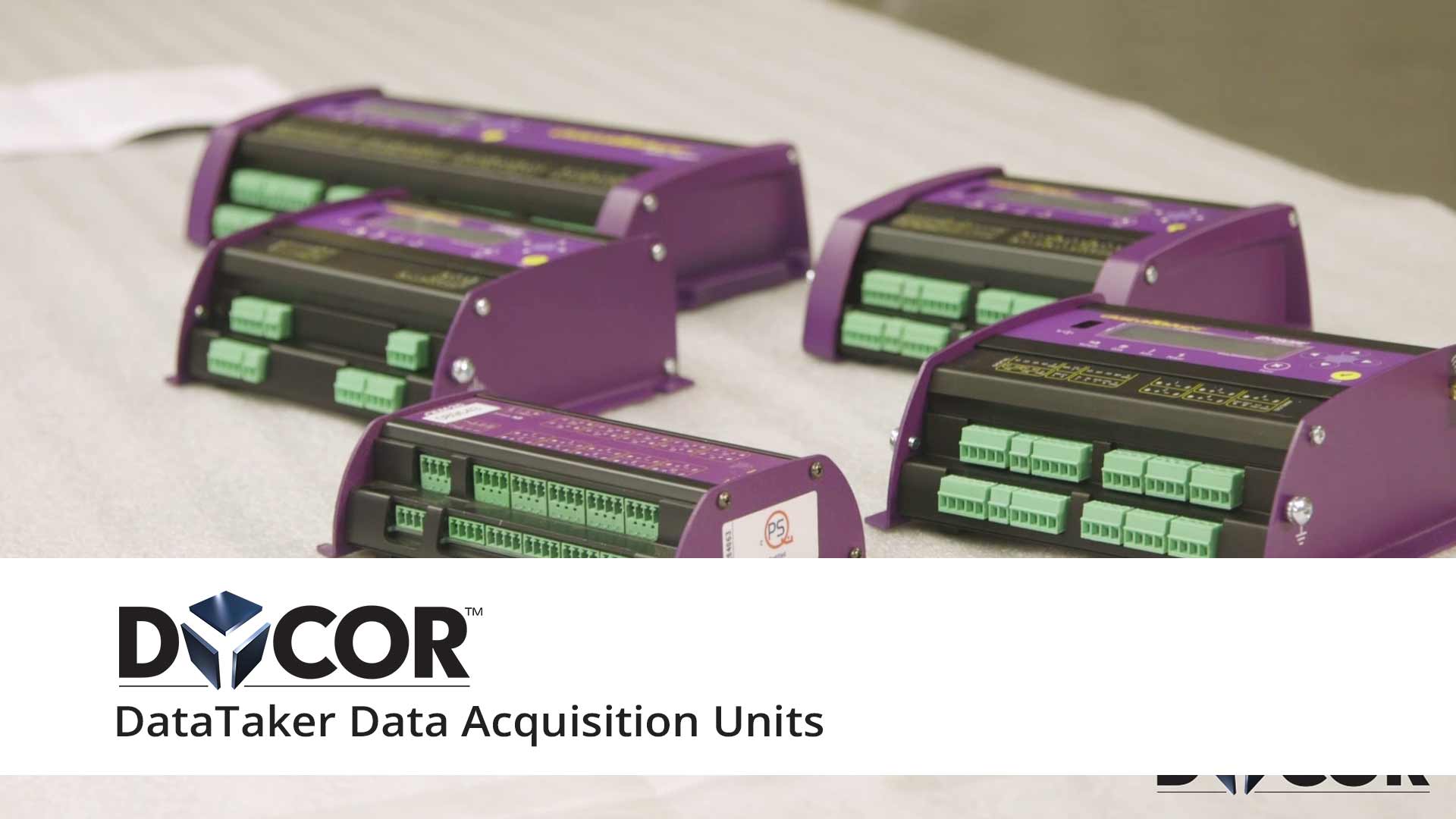The dataTaker product line comes in three main categories of loggers: We have the DT80 and the 80g, we have the 82i and the 82e, and we also have the DT85 series. We’ll just go over a few of the features on the three different categories. The DT80 and the DT80g have five analog input channels which can be configured in different ways to accommodate for a higher input count. You can hook up to three analog inputs to each analog channel. The DT80g and the DT80 have one main difference in that the DT80 has a internal battery that allows the dataTaker to log for a few minutes, depending on the channel count. The DT80g has substituted the internal battery for a vibrating wire, also known as a piezometer, analog input. So there is an additional circuit board inside the DT80g that allows the logger to pull and record vibrating wire or piezometer signals.
The DT82i and the DT82e are lower-cost and lower-channel-count loggers. The DT82e has one serial port, whereas the DT82i has two. The DT82e has modbus slave. And the DT82i has one bus master and slave. The dataTaker product line with Dycor Technologies is Class I Div II approved. The configuration is transferable across the loggers as long as the channel count is met. For oil and gas, the DT80g is more of a standard logger because most of our clients do use the vibrating-wire interface. They have the downhole sensors that put out a vibrating-wire signal, which is a frequency signal. And that only the DT80g or the DT85g can handle internally. We are, however, able to add, through the modbus feature that most of the loggers have, we’re able to add extra peripherals that allow for different signal types if the dataTaker cannot read them.
The DT80, the 80g, the 85, and the 85g have eight bidirectional digital IO. And all the dataTakers have one analog output. All models of the dataTaker support quadrature encoder inputs so we can have phase encoders tied into the loggers and we can keep track of the phase and the count based on the input. The SDI-12 protocol is a fairly standard communication protocol among sensors. And the dataTaker fully supports it. Some of the dataTakers do come in a wifi or a cellular modem option, which basically allows for wireless connectivity right out of the box.
All our dataTakers do have a 10Base-T ethernet port which is plenty fast for data communication that we do. They all come with a web server built-in that allows for a user to go into a web browser and configure, and monitor, and download the data from any of the loggers. The DT85 and the 85g, they are the bigger model of the dataTaker. They have 16 analog inputs, which again, can be tripled-up because of the dual-isolation technology that the dataTaker uses. You can have three analog inputs per channel. So if you didn’t need the isolation, you can have up to 48 analog inputs hooked up to a DT85 right out of the box. And the 85g, once again, includes the vibrating wire circuit board which allows the DT85 model to read vibrating wire signals.
Most of the dataTaker models support modbus master and slave, except for the DT82e which is just the modbus slave. It cannot be a modbus master. The DT82i and the 82e have two analog channels which allows for up to six common-ended analog inputs. And if you require isolation, then you can do up to four analog inputs. The analog inputs on the dataTaker are universal. They can be configured to read different kinds of sensors such as four to 20 milliamps, zero to 10 milliamps, zero to 10 volts, RTDs, thermistors, thermocouples, you name it. There’s not a lot of analog signals that the dataTaker cannot handle.
The CEM20 is a channel expansion module for the dataTaker line of data loggers. It allows for up to 20 channels to be connected and multiplexed to a single analog input on the dataTaker. The cables that are required to connect the CEM20 to a dataTaker, come along with it in a box. It takes up one analog input on the dataTaker, but it gives you 20 additional channels, so it’s a net-19 channel unit. The analog inputs on the CEM20 work the same way as they do on the dataTaker. There’s two control lines that connect the dataTaker to the CEM20. And there’s internal relays on the CEM20 that switch between the channels to engage each channel to be read by the main dataTaker. The DT80, the 85, the 80g and the 85g are all compatible with the CEM20. So with the 80, for example, or the 80g, you can have up to five CEM20s connected which would allow you to do a hundred analog inputs. And if you had common-ended inputs, you could do up to 300 analog signals. With the DT85g, you can have up to 16 CEM20s connected, which can allow you to connect up to 960 analog inputs.
Transcript of video: https://youtu.be/aHtHVW1HDU8

